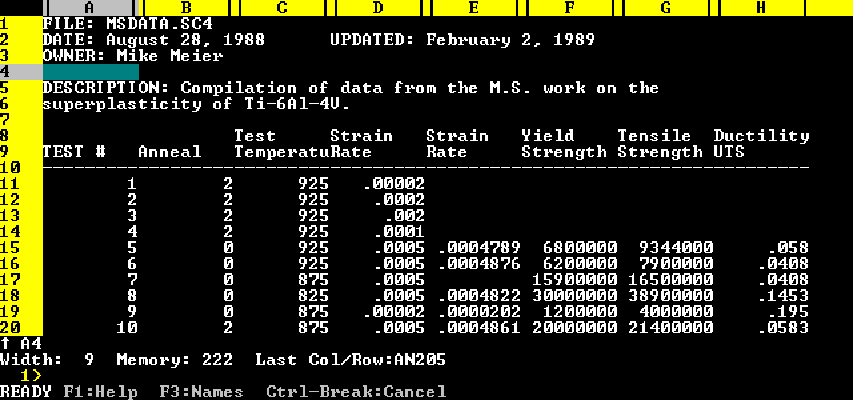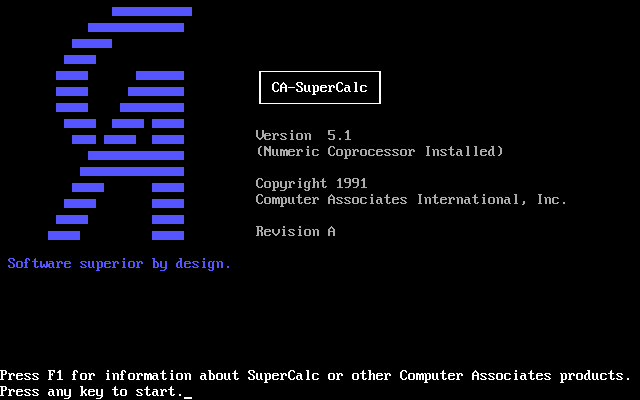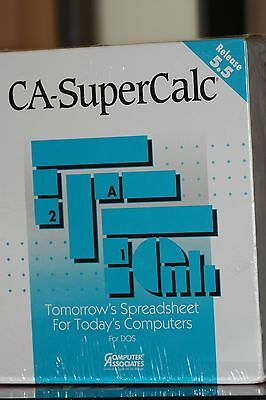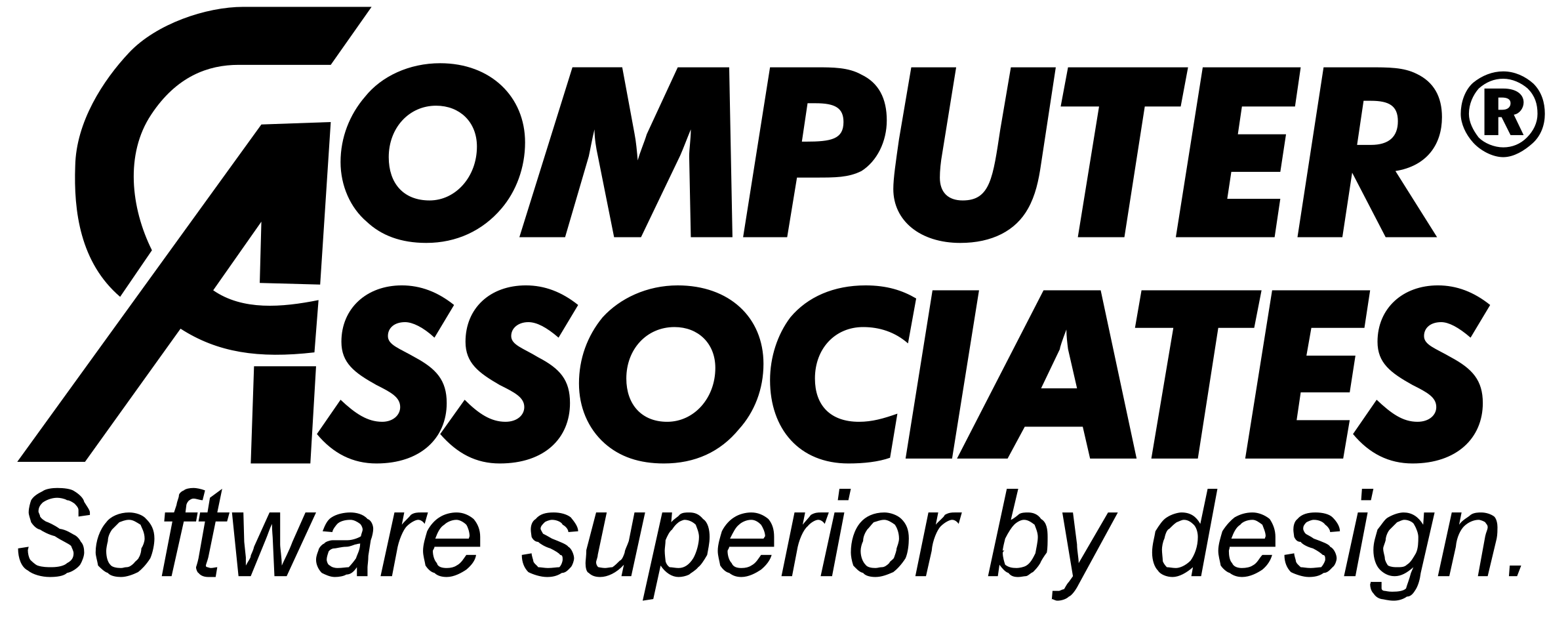 Computer Associates
Computer Associates
SuperCalc
In 1980 a company called Sorcim launched their rival product to the best-selling spreadsheet on the market, VisiCalc. VisiCalc only ran on the CP/M operating system, and even then not on all versions. SuperCalc was designed with more flexibility to work on almost any system. With the introduction of the IBM PC it was ported to MS-DOS 1982 alongside an Apple II port.
SuperCalc 2 followed in 1983 with a split-screen option where you could view and edit cells on the left side of the screen, and view graphs on the right. It ran on MS-DOS 1.1 as well as CP/M-80 and -86.
In 1985, Sorcim was bought by Computer Associates, a company that at one time was the 2nd largest software company in the US, second behind Microsoft to ever reach over $1BN of sales. Their background was in IBM mainframe tools and utilities.
SuperCalc 3 was released that same year, and CA announced they had over a million users running the software. It was the first version of SuperCalc to make use of the Expanded Memory Specification (EMS) memory as well as EGA graphics.
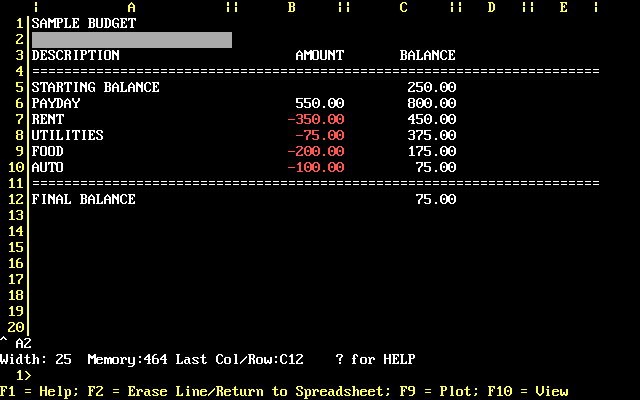
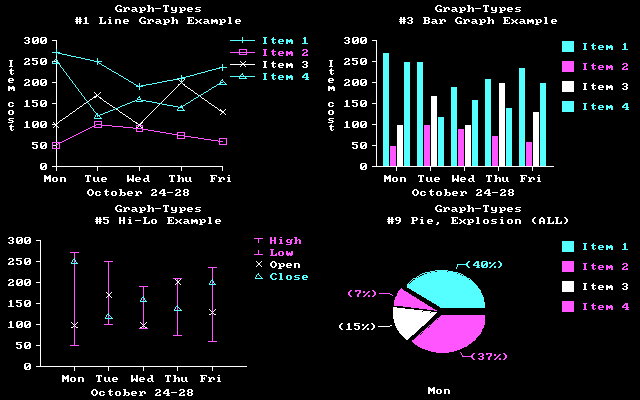
SuperCalc3 running in EGA mode (left), and graphs in CGA mode (right)
SuperCalc 4 was released in July 1986, and introduced more enhanced graphics capabilities, though compared to its biggest rival at launch, Lotus 1-2-3, the Lotus product had more advanced macros. Over the past few years the two spreadsheet giants had been in a continuous struggle with each other to add new functionality, with each one borrowing feature ideas from the other every new release. In an aggressive move, CA gave SuperCalc 4 no copy protection (something Lotus had in all their software) and offered attractive site-licence plans for businesses. A standalone licensed PC version of SC4 was $495.
With SuperCalc 4, however, Computer Associates again pulls up neck and neck with Lotus by adding long-awaited 1-2-3-like macros and extended compatibility with its files. Combined with lack of copy protection and an elaborate site-licensing plan, SuperCalc 4 offers corporate managers a serious corporate spreadsheet alternative.
FEATURES: SuperCalc has never been reluctant to borrow from 1-2-3's most popular features. The external macro file, an early attempt to incorporate the critical macro feature of 1-2-3, and a much superior graphics module are two examples. SuperCalc 4 continues this tradition by adding one notable enhancement: macro commands that, like those in 1-2-3, can be stored on the spreadsheet. Lotus, too, has found occasion to follow in SuperCalc's footsteps, most recently in Release 2, by adding expanded memory specification compatibility and a form of sparse memory management found in a version of SuperCalc 3.
SuperCalc 4 offers 88 macro commands, compared to 75 commands in 1-2-3 Release 2. Thirty-six of SuperCalc 4's commands are identical to Release 2 commands.
Graphs have always been easier in SuperCalc than in 1-2-3. To output graphs in 1-2-3, you define and view a graph, save it to a separate file, then exit 1-2-3 and start up a separate graph-printing program. You return to 1-2-3 when you're done. With SuperCalc 4 you can print a graph immediately after defining and viewing it, without leaving the main program. SuperCalc 4 includes drivers to print graphs on 56 standard printers, 17 color printers, and 26 plotters. You can change printer devices from within SuperCalc 4 easily; there is no need to run a separate installation routine before printing.
SuperCalc 4 has more rows available (9,999) than either 1-2-3 Version 1A (2,048) or Release 2 (8,192). SuperCalc 4 uses up to 255 columns, virtually twice the number available in SuperCalc 3, and one less than in 1-2-3. Like both its immediate predecessor and Release 2 of 1-2-3, SuperCalc 4 is compatible with IBM's Enhanced Graphics Adapter and Enhanced Display Monitor, as well as with the Compaq and the Hercules monchrome graphics adapters. SuperCalc 4 can take advantage of the Intel 8087 and 80287 math coprocessors for greatly improved calculation speeds."
InfoWorld, 11 August 1986
SuperCalc 5 came along in 1989, though by this time Microsoft Excel was moving into the #1 spot as the spreadsheet of choice for the PC owner.
SuperCalc 5.5 was the last release of the product.
Original Boxes:

